

Countless gung-ho riders were galloping back and forth, and frantic calls were coming from all over the property on the radio. We had lost a precious female buffalo after darting her, and the race was on to find the drugged cow before it was too late. As everyone soon discovered after their arrival, this was not your typical horseback safari. This was game census week in the Waterberg, and the catch-and-release of wild animals doesn’t always go according to plan.
As a fellow guest pointed out, there are plenty of places to ride around in the dust, but you can do so with a purpose in the Waterberg. Game Census Week aims to ensure that the private reserve and its wild residents continue to thrive. A game census is a vital tool to achieve this, as it is essential to have accurate numbers of browsers, selective grazers and bulk grazers to maintain a balance in the ecosystem and not over-utilise the environment, which could cause permanent damage to the vegetation.
The week also lends itself to other conservation activities, such as darting and relocating wildlife to establish new populations or to avoid culling. The Waterberg region of South Africa has been exceptionally dry this winter, as the area has been crippled recently by the El Niño drought. As a result, the reality is that farmers either have to sell, move or shoot their livestock or game; otherwise, there is the costly exercise of subsidising feed. The Ant Collection has made a plan to mitigate such circumstances. Once a year – during the winter months, as you can only move animals when it’s not breeding season – guests are invited to saddle up and play cowboy in a modern-day South African context. The pace of the game census week varies, from lots of waiting around to manic adrenaline-pumped riding, which keeps things interesting for the participants.
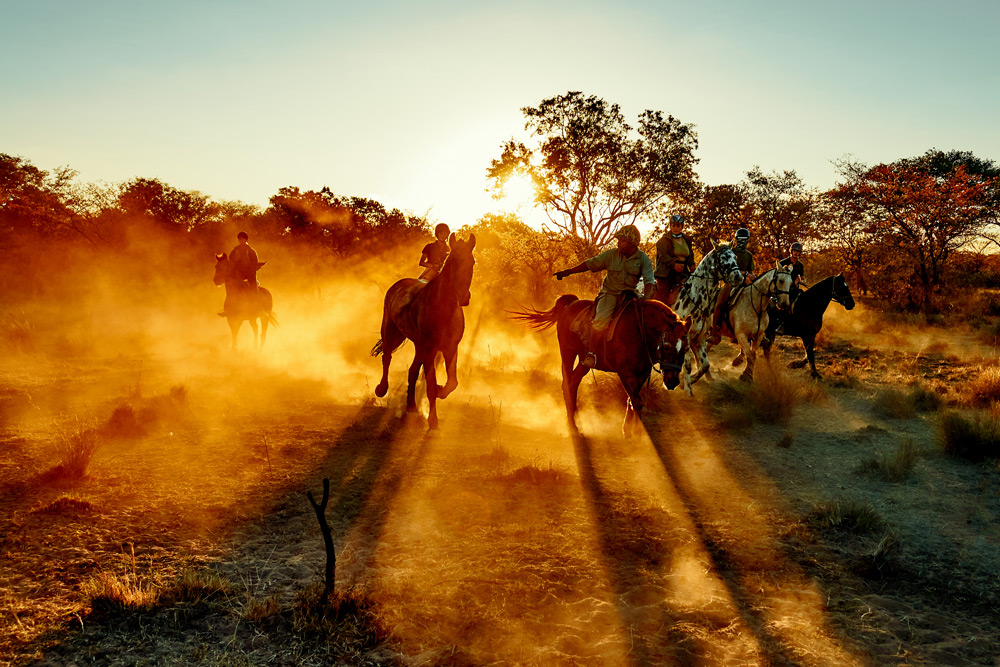
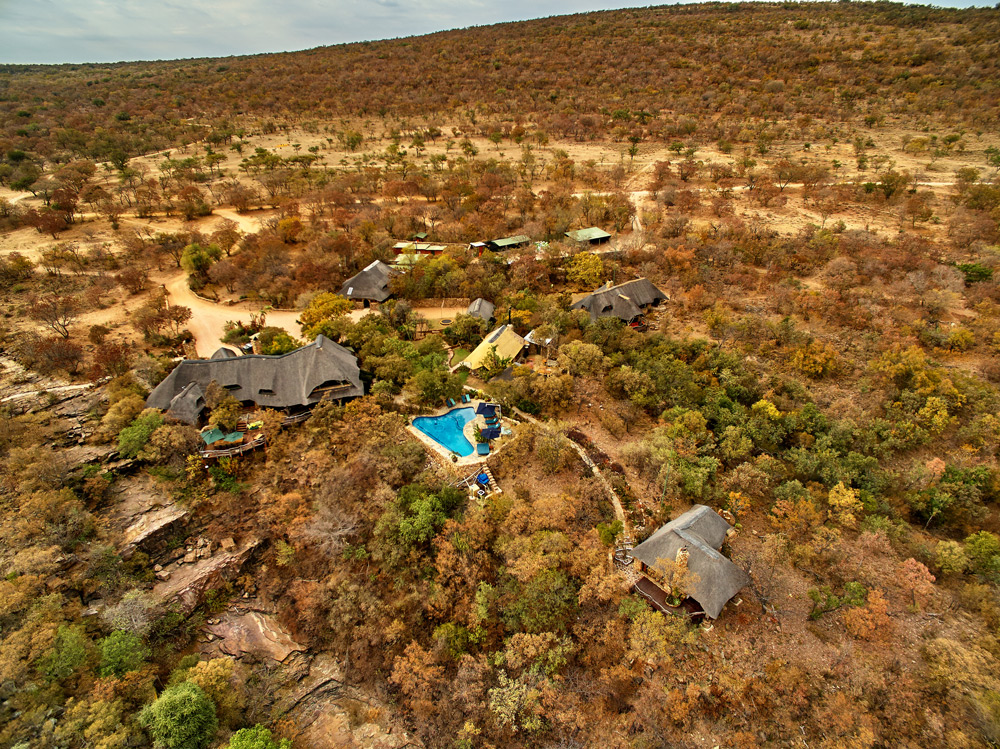
The Ant Collection has a herd of about 90 horses of five different breeds – athletic thoroughbreds, sure-footed South African boerperde, calm Frisians, spirited Arabians and steady appaloosas. The horses are well-oiled game census machines, knowing to wait patiently while listening for the dart gun before they go racing off to find the targeted animal after a radio cue.
Game capture entails selecting an animal to be darted, which is then surrounded on horseback to keep it in sight. The height and non-threatening presence of the horses allow for good accuracy when counting or capturing game, and it is much less stressful for the wildlife to be approached on horseback rather than in a noisy helicopter.
After what felt like searching for a needle in a haystack, we eventually found that buffalo cow, which had fortunately fallen in sternal recumbency (on its chest). If an animal, except for the rhino, falls in lateral recumbency (on its side), it is predisposed to bloat due to a build-up of gastric gases in the rumen, which is often fatal. With a massive sigh of relief – and a couple of cries – we loaded her up in a trailer and took her to greener pastures where she could start a new breeding herd.
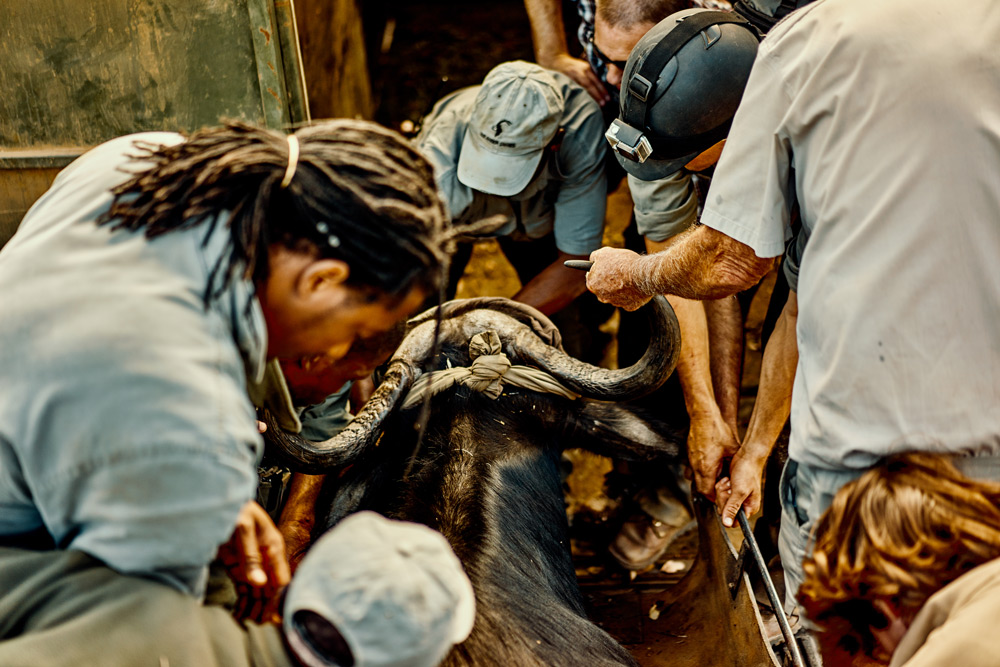
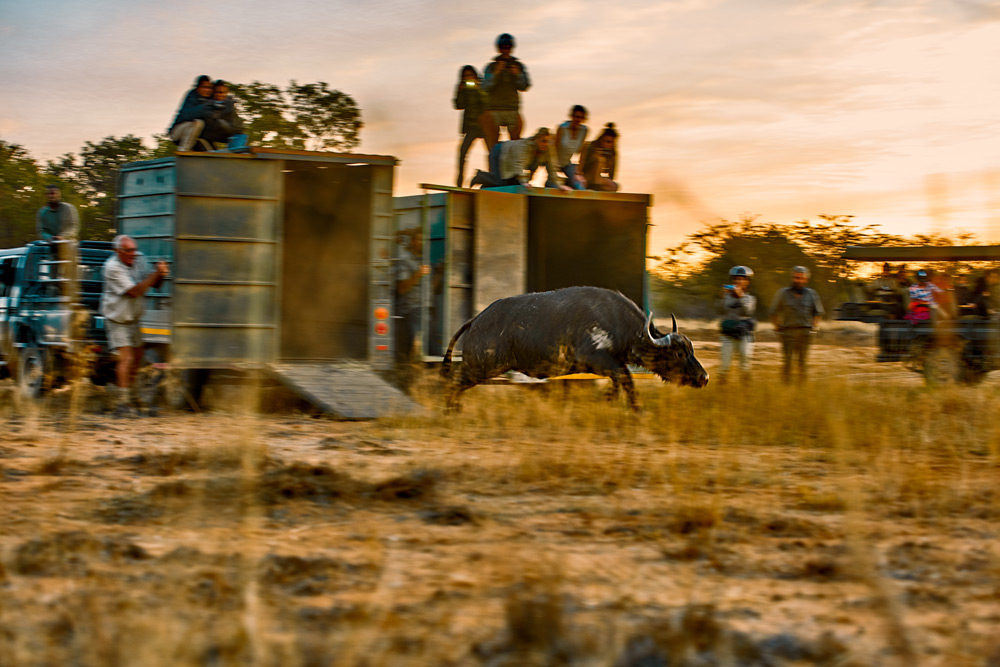
Ant’s antelope
During the week, one of our focuses was to relocate young sable and nyala bulls before they reached maturity and would start to challenge the dominant male in the breeding camp. The goal was also to move females with strong genes to a new camp to help establish populations there.
Fortunately for us, the sable and nyala were relatively predictable and easy to handle. Sable are curious and keen to stick together when darted, while nyala tend to split and run. Once the browser is down, someone has the job of holding the slobbery tongue out of the mouth to stop it from choking. Branches are then placed in the trailer around the animal to make it feel more relaxed and at home while being relocated.


Things were a bit trickier when it came to trying to relocate the shy eland, as we had to bribe Africa’s largest antelopes out of the thicket with oranges, which they love because of their vitamin-rich content. It is highly entertaining to watch an eland eat an orange, as they swallow them whole! Eland are also notorious for running away when you see them, so the horses were not always up to speed, and helicopters were called in.
Rather than merely relocating eland, it became more a question of reacting to medical emergencies that the vet had spotted. In particular, a quick change of plan was required when we found two eland with abscesses that were infested with maggots. Tick bite necrosis is a fairly common – and sometimes fatal – problem for kudu and eland, as these two species tend to be predisposed to abscesses caused by ticks around the genitals and ears. But luckily, Dr van Zyl was there to save the day, and he scraped the wounds clean while his audience worked hard to control their gag reflexes. Once injected with an antibiotic and loaded with medicine, the eland were then moved to a smaller camp where they could be monitored.
During our relocation efforts that week, a kudu calf was also reportedly stuck in the mud, so we diverted our route home one day to pull him out! The calf was so exhausted, and his mother was nowhere in sight, so a decision was made to take him back to camp after the successful rescue. The staff at The Ant Collection are no strangers to saving animals and after initially trying to bite his rescuers, the young kudu quickly took to bottle feeding and has gone from strength to strength ever since. Affectionately named Muddy, the little antelope will have to return to the wild eventually, but his kudu cuteness and doe eyes have melted the hearts of every guest and guide in the meantime.
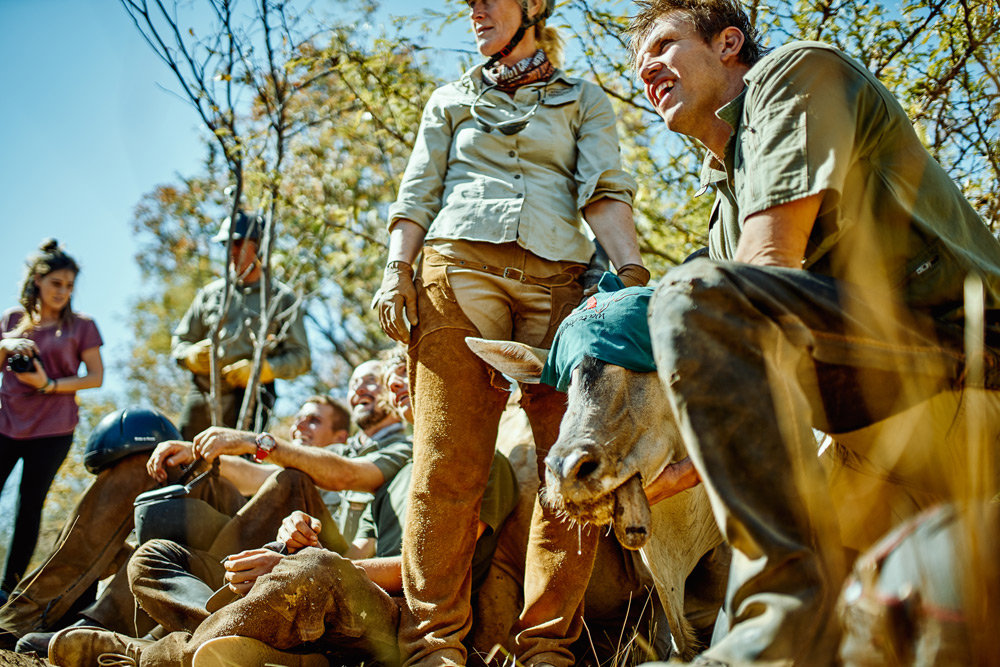
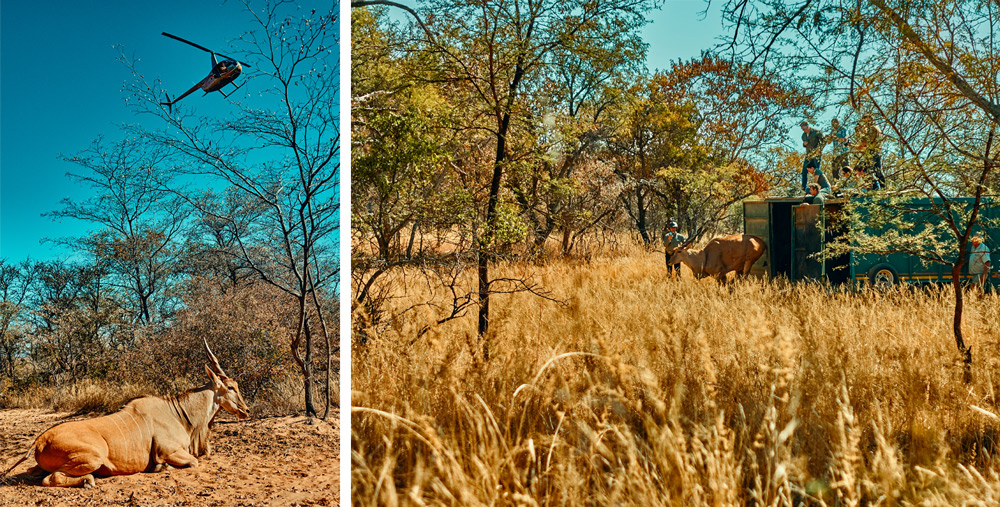

The tears of a giraffe
As much as we all fell in love with Muddy, the giraffe capture day was the most exciting part of my week-long experience. However, this was also the most emotionally draining day, as giraffes are a vet’s trickiest patient due to their physiology, and they have been known to die randomly under anaesthetic. To our dismay and horror, we were to witness such a death.
However, we had to take this risk to be able to move three of these gentle giants to a local buyer’s farm. As a result of the drought, the reality is that the giraffes will otherwise starve to death and with no big predators on the property, there is no means of natural population control. The other alternative to relocation is culling, which The Ant Collection has decided against.
Giraffe are complicated to capture and before making any attempt, the vet and the guides gave us a step-by-step demonstration. Ralph, the reserve’s black labrador, also assisted. We not only discovered that giraffes tend not to fall after being darted, which means you have to trip them, but we also learnt that you have to help them to stand upright when they wake up.
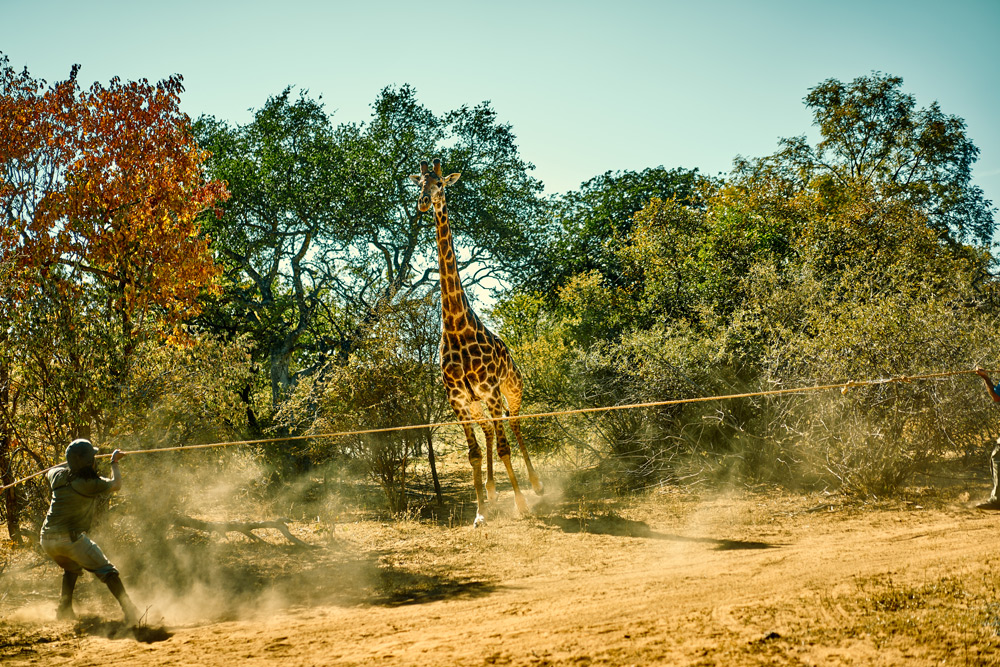
Like a buffalo, a giraffe has to lie on the ground abreast once it has been tripped, but the difference is that its head has to be kept suspended due to its unique circulatory system. The giraffe has double the blood pressure of other mammals (for blood to reach its brain), which means that the brain can quickly become flooded with blood and damaged if it is not above the heart. By the time I arrived on the scene after an unfortunate detour through the thorn bushes, the spotted ungulate was already blindfolded with its ears plugged and ropes on. As it tried to muster enough momentum to stand up again, guides, guests and volunteers pushed and pulled relentlessly, willing it to stand. Everyone knew that the longer it remained on the ground, the riskier the situation became.
After a great deal of sweating and muttering prayers under our breath, the giraffe’s movement became less frequent, and it took its last breath. Tears left treadmarks in dusty, exhausted faces – the energy that went into trying to save the giraffe was heart-wrenching. The sad loss made me realise how there is a fine line between life and death, and tragically, we had lost this giraffe even though we had managed to save little Muddy against the odds. It’s best to remain impartial when dealing with wild animals, but this is easier said than done. Or sometimes near impossible.
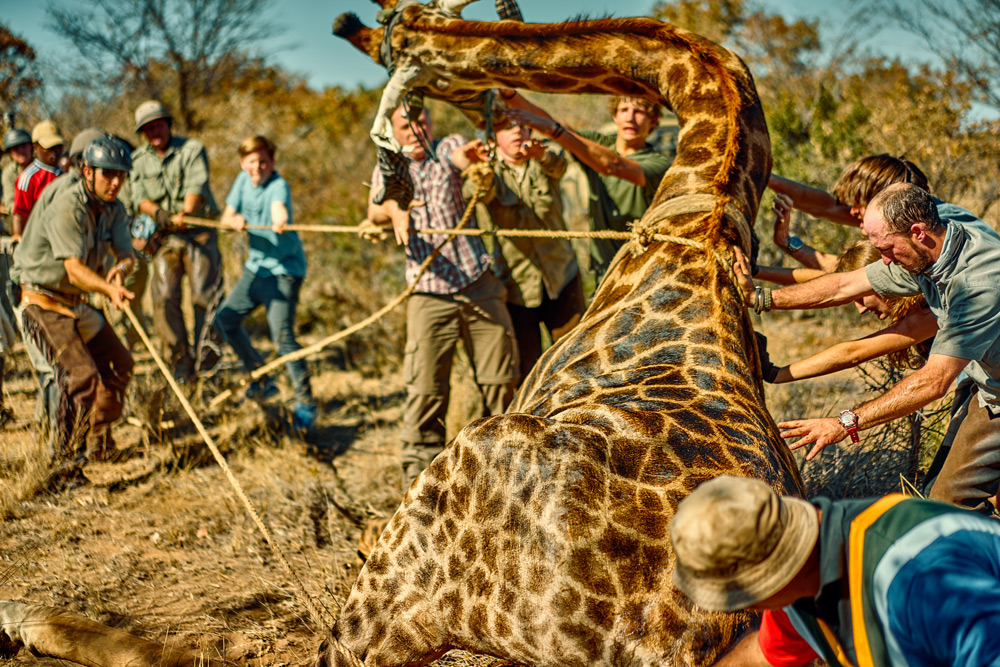
Rescuing rhino
Following this emotional rollercoaster of an experience, it was time to focus on the rhinos. After three rhinos were poached at The Ant Collection in two separate incidents in 2011, the owners, Ant and Tessa Baber, enlisted the help of the Rhino Rescue Project – an NGO that specialises in making rhino horn unfit for human consumption by infusing a compound consisting of ectoparasiticides into the horn fibres.
This is a costly but worthwhile process as they have not lost a rhino since employing this technique, and there is also an around-the-clock anti-poaching unit guarding these odd-toed ungulates as a further precaution.
During game census week, two young rhinos were cited as having long enough horns for the infusion process, but we first had to separate the calves from their mothers using ‘horsepower’. Once darted, Lorinda and her team from the Rhino Rescue Project worked under pressure to take blood samples and measure the horns while their machine worked to ensure that no one would want the horns other than the rhinos themselves!
The rhinos are an intricate part of life at The Ant Collection, and the Babers have been instrumental in establishing the charity Save the Waterberg Rhino, which plays a vital role in educating local communities about the importance of the Waterberg rhino. So far, the organisation has not only unified local landowners in the Waterberg Biosphere, but it has also made roads less accessible to poachers.
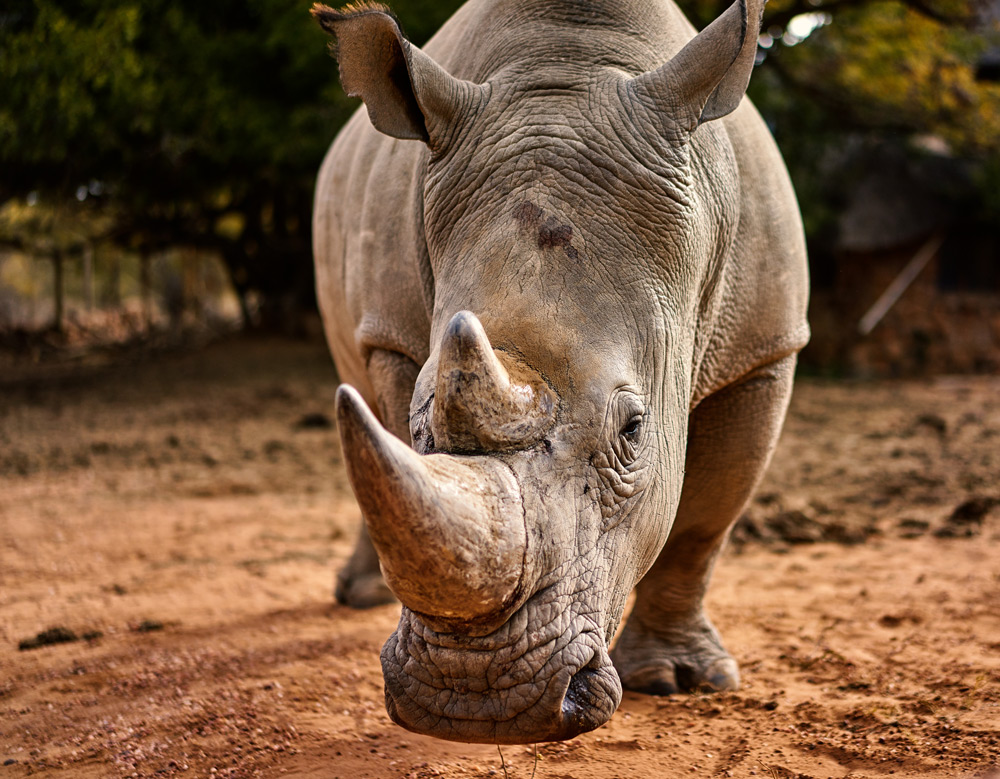
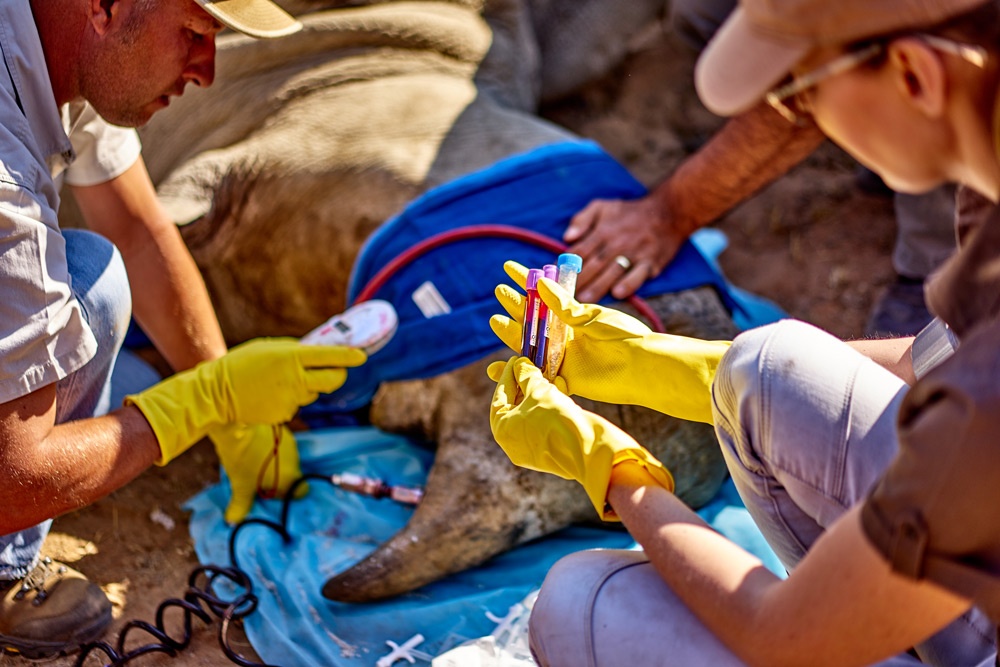
What you need to know to take part in Game Census Week
You don’t have to be a rider to participate in game census week, as there is plenty of action in the darting and recovery vehicles. However, if you wish to saddle up to help, it is crucial to be an experienced and confident rider.
Be sure to pack proper riding attire, as every little bit helps to make you more comfortable and secure in your task. It’s also worth bringing neutral-coloured clothing, a swimming costume in case you want to take a dip in the pool after a long ride, and a warm jacket to wear in the early mornings or evenings if it gets nippy. Don’t be afraid to pack light; the laundry service is brilliant!
The daily activities make you so hungry that you could eat a horse, and for this reason, you can expect to enjoy three delicious meals per day, on top of mid-morning saddle bag snacks, afternoon tea and sundowners.
The Ant Collection is a horse of a different colour during game census week, but at other times the lodge operates on a flexible timetable, and guests can pick and choose from a host of activities, from bush walks and game drives to cycling and horse riding. On a regular horseback safari, no previous horse riding experience is required as the horses are well-trained and you’re not expected to keep up such a frantic pace.
Situated in a malaria-free area in South Africa, a trip to the Waterberg makes for a fun holiday for all the family, especially as there are no lions or elephants on the private reserve, which makes it an even safer choice for children.
One of my favourite activities was a late-night lecture presented by Dr Philip Calcott, whose knowledge of the night sky was quite literally out of this world. The lack of pollution results in a starry sky, and while cuddled up under blankets and clutching cups of hot chocolate, we learnt about the planets and some iconic constellations. This Night Sky Safari was full of interesting facts, which surprisingly didn’t take light years to learn. Did you know that the same iron oxide in the Waterberg occurs on Mars, too?

When you’re not snaking through the bush on horseback, a real hit is Craig’s reptile demonstration, during which guests can learn about the resident snake species, including African rock pythons, puff adders and cobras. Craig aims to challenge the misconceptions of snakes and offer an informative perspective.
With so many options and such fun-filled days, choosing a favourite experience is difficult. However, what I found most astonishing about my trip was the personal bonds I formed during my game census safari. The shared adrenaline-filled experiences and boozy campfire banter create the perfect recipe for friendship, and the number of recurring guests is an accolade to this. In the words of Tessa, the owner: “You arrive as guests and leave as friends.”
 Find out about South Africa for your next African safari – find a ready-made safari or ask us to build one just for you.
Find out about South Africa for your next African safari – find a ready-made safari or ask us to build one just for you.
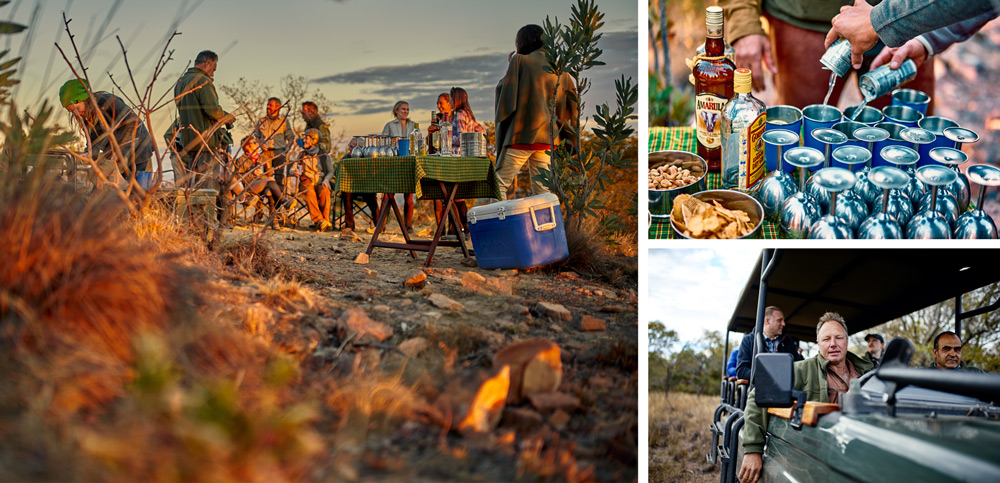
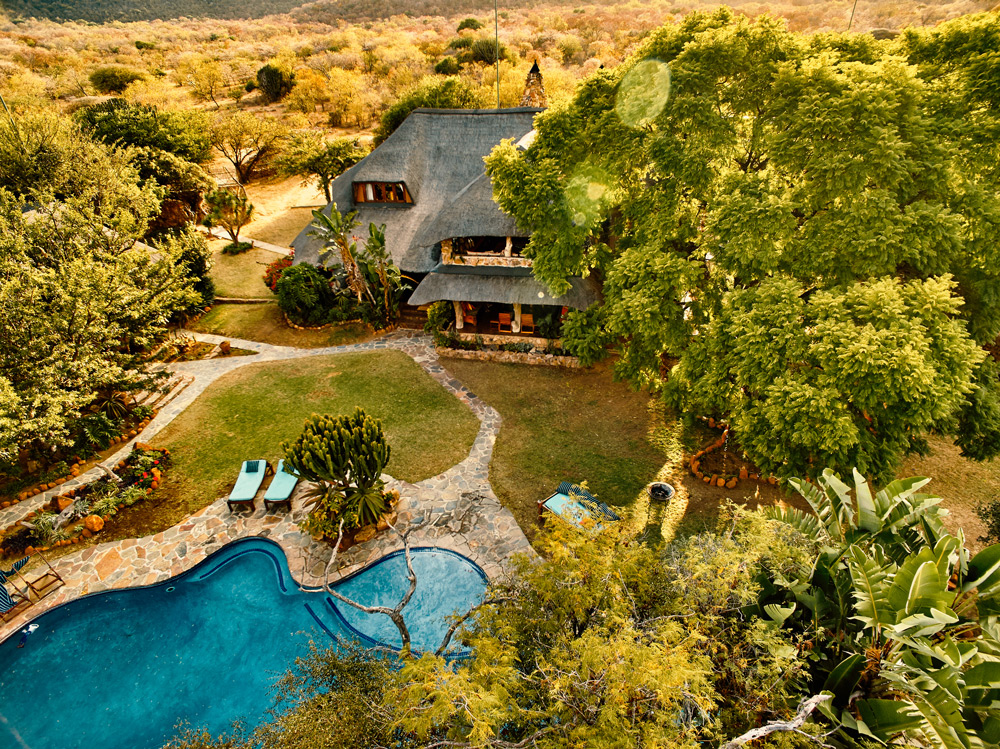
About the author
 Georgie grew up escaping city life by going horseback riding in the Magaliesberg mountains or Land Rover-ing in the Madikwe sandveld. Accustomed to the sun on her face and the wind in her hair, Georgina then embarked as a trainee sailor on a three-masted barque after graduating with a degree in Environmental Science.
Georgie grew up escaping city life by going horseback riding in the Magaliesberg mountains or Land Rover-ing in the Madikwe sandveld. Accustomed to the sun on her face and the wind in her hair, Georgina then embarked as a trainee sailor on a three-masted barque after graduating with a degree in Environmental Science.
Ship life steered her beyond her beloved Southern Africa to remote destinations and ecological treasure houses like the Galapagos, Pitcairn Island and Polynesia. Once grounded, her love of the outdoors developed into a deep respect for the environment and a desire to preserve it.
To comment on this story: Login (or sign up) to our app here - it's a troll-free safe place 🙂.![]()






